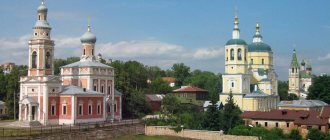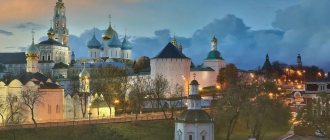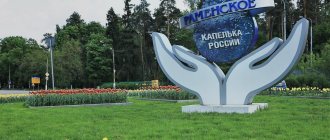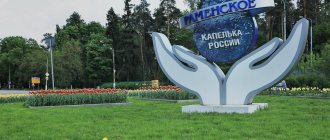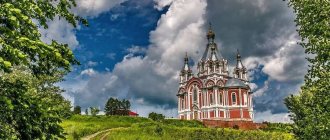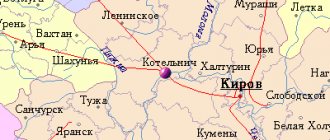The small provincial town of Myshkin, it would seem, was not much different from other similar ones. And if not for the efforts of local historians, perhaps by now it would have decayed and turned into a backwater. But now Myshkin is an important point on any tourist route. Lenta.ru tells how a small town invented an interesting legend for itself, which attracts the attention of tourists from all over the country.
The city of Myshkin, in the Yaroslavl region, appeared on the pages of late Soviet periodicals as if out of nowhere. Children who grew up in the late 1980s remember how stories about the "city of the mouse" suddenly appeared in children's magazines such as Pioneer and Funny Pictures. They usually told the legend of its creation: supposedly Prince Fyodor Mstislavich stopped here, lay down to sleep on the banks of the Volga, and suddenly a mouse ran across his face. He got angry and was ready to kill her, but then he saw a snake in the grass and realized that the mouse wanted to warn him about the danger. This is how the city of Myshkin supposedly got its name.
The magazine also said that a museum had been created in the city in honor of that very mouse - write letters, guys, she will be pleased. It is difficult to say whether this legend has really existed for a long time. Most likely, it was invented by the museum staff, because a version of the origin of the name of the settlement from one of its first inhabitants is documented. But it played its role: the mouse became Myshkin’s mascot, and the city itself turned into a real magnet for domestic (and not only) tourism.
View of the Myshkin pier
Photo: Maria Vashchuk / RIA Novosti
***
It is difficult to say when in reality a settlement first appeared here, but the mousers themselves, of course, want the history of their city to go back centuries. Therefore, local local historians at one time ordered a study from the archaeological department, which sent an expedition of specialists there. As a result, it was found that people had lived here since Neolithic times, and ancient builders erected buildings back in the 10th century.
It is clear that in any case, someone has lived on almost every piece of land throughout history. But documentary evidence that there was a settlement here dates back to the 16th century: then the village on the site of present-day Myshkin belonged to the Ushaty princes, who fell into disgrace during the oprichnina, so it was transferred to the Mezetsky princes, close associates of Ivan the Terrible. However, the village did not remain in this status for very long, and by the end of the next century it, along with the surrounding settlements, was transferred to the Chudov Monastery.
It was at this time that one of the main branches of the Myshkin economy began to develop - pilotage, fortunately on the Volga, on the banks of which it is located and which has always been an important transport artery, there are many shoals, rapids and rifts.
But the real history of Myshkin began already in the 18th century, when Catherine II divided Russia into provinces and districts and secularized church lands, placing them under the authority of the College of Economy. That’s when the former village officially received city status, and Myshkinsky district appeared
It began to actively develop, in particular due to the fact that in 1780 a master plan for its development was approved. Crafts and agriculture flourished here - Myshkinsky district was considered the most developed in terms of agriculture in the Yaroslavl province. Wheat and flax were grown here, timber, fish, pottery and wooden utensils were traded, and crafts and trades flourished.
And, of course, in this situation, Myshkin could not help but be a merchant city, crowded fairs were in full swing here, tons of food were sent from here to St. Petersburg - butter, eggs, bread... There were also fabrics that local craftsmen wove mainly from flax grown here same.
Museum of the Myshkin merchants "Makhaev Dvor"
Photo: Alexander Chizhenok / Kommersant
Merchants not only came to Myshkin to buy goods - it became the city of entire dynasties of entrepreneurs. For example, the Chistovs. Its founder, Vasily Chistov, was not a native resident of the city, but settled here, engaging in grain trading, which he purchased in the lower provinces and sent by his own ships to St. Petersburg.
And his son Timofey not only increased his father’s fortune, but was also actively involved in charity work. Of his several mansions, he donated one for a hospital, and also erected a church in the city cemetery.
There is another famous merchant, a native of Myshkin.
Coming from a family of serfs, Pyotr Smirnov became famous for the fact that his name became one of the most famous vodka brands in the world. Smirnoff vodka, which was produced by the spirits factory founded by Pyotr Smirnov in Moscow, is named after him
Smirnov founded a real vodka empire and for his successes received the rank of commercial adviser, which in civilian life corresponded to the rank of general. But 1917 came, the February Revolution took place in the country, as a result of which the tsar abdicated power, and then the October Revolution, when the Bolsheviks came to power. The Smirnovs emigrated, and their business was nationalized by the Bolsheviks.
Myshkin, a wealthy district town, gradually became smaller under Soviet rule, and in 1927 it was reclassified as a village. It seems that the motivation was that not many people lived here, but the locals believed that it was all because the remaining city merchants opposed the orders of the Bolsheviks - so, they say, they demoted the city.
One way or another, for a long time Myshkin - more precisely, now the village of Myshkino - became a godforsaken place that no one cared about. And this was the case until the mid-80s.
Museum of Peasant Architecture in Myshkin
Photo: Victoria Demidova / Photobank Lori
How to get to Myshkin
Myshkin is located at a distance of 280 km from Moscow and 100 km from Yaroslavl . Unfortunately, Myshkin can only be reached directly by car; there are no direct bus or train connections. There is a bus service with transfers along the routes: Yaroslavl, Rybinsk, Uglich, from the Volga and Nekouz railway stations. By rail you can get to Volga station. The Moscow-Rybinsk, St. Petersburg-Ivanovo, St. Petersburg-Samara trains stop here. Electric trains run from Yaroslavl and Rybinsk to the station. Volga . Then take a bus to Myshkin (the bus stops next to the railway crossing).
Bus schedule Moscow-Myshkin (right bank)
From Moscow, from the Botanical Garden metro station, Moscow-Rybinsk buses run with a stop in Myshkin on the right bank of the Volga. Then take a ferry to the other side of the Volga.
There is no bridge across the Volga in Myshkin: in the summer, a ferry runs from the village of Korovino from 06:00 to 21:30. There is a fee for crossing for cars. Passenger transportation is free of charge. In winter, you need to go to Myshkin through Uglich (the distance between the cities is approximately 40 km).
Bus schedule in the city of Myshkin.
***
Perhaps, if local historian Vladimir Grechukhin had not been born on June 21, 1941 in the Myshkinsky district, this settlement would have faced the unenviable fate of dozens, or even hundreds of similar villages. But fate decreed otherwise.
The fact is that he really loved his homeland and wanted to know everything about it. Being virtually a lone warrior in the field of Myshkin local history, in the 60s Grechukhin organized the first local open-air ethnographic museum. And in the 80s he developed, based on the idea of the Moscow journalist I.B. Honey and the recommendations of Academician Likhachev, with whom he was in correspondence, the Myshgorod brand opened the very Museum of the Mouse, about which all Soviet children's and youth magazines and newspapers began to write. It was he who in 1991 won and returned Myshkin’s city status.
Of course, the Museum of the Mouse itself and the accompanying legend about the prince and the mouse are more myth-making than the real history of the city, but thanks to them, Grechukhin did what he had long dreamed of: he attracted people’s attention to the city. It is clear that a city with such a rich and interesting history has something to offer guests besides the fairy tale about the mouse.
What to see in Myshkin
Mouse's chambers
The Myshkin Chambers tourist complex is a tourist attraction. It will be especially interesting to watch with children . The action takes place in the form of a performance: the guards ask for the password, the courtyard servants are happy to reveal all the mouse secrets and escort the guests along the mouse paths. The Mouse King himself and the Queen in the throne room talk about the difficult fate of mice and teach how to protect themselves from cat misfortunes. There is also a small cheese factory here and, of course, there are live mice.
Restaurant Mousetrap and hotel Koshkin Dom
To feel the atmosphere of this lovely city, you must have lunch at the Mousetrap (Karl Liebknecht St., 27). The interior decoration of the restaurant is made in folk style, and the dishes are prepared according to traditional Russian recipes. Even the bread here is baked in the home kitchen. Free cheese in the Mousetrap is not just a saying! Guests of the establishment are served a cheese plate while waiting for lunch! At the other end of this building is the Cat House hotel.
Cathedral of the Assumption of the Virgin Mary
Cathedral of the Assumption of the Virgin Mary in Myshkin
After lunch, you can go to Assumption Square to explore the Cathedral of the Assumption of the Virgin Mary , which, according to the founders of the city, was supposed to be its architectural center. Climbing up to the observation deck on the bell tower of the cathedral, you can see a panorama of the city of Myshkin from a bird's eye view.
Panorama of the city of Myshkin from the bell tower of the Assumption Cathedral
St. Nicholas Cathedral
Another large cathedral in the city is St. Nicholas Cathedral - the Cathedral of St. Nicholas the Wonderworker. This oldest building in the city was erected before Myshkin was given city status. It was built by the merchant of the first guild, Alexander Petrovich Berezin, whose father, out of poverty, pawned the family icon of St. Nicholas the Wonderworker in the tavern. And only 25 years later Alexey found her and bought her back. He considered it a miracle and built a stone church with his own money.
In Soviet times, the House of Culture was located here. In 2003, St. Nicholas Church was returned to the Church.
In the basement of the temple there is an exhibition “Secrets of the 8th century”. On it you can see rooms, shelves and containers for storing food (usually the basement was rented out as a warehouse). There are also huge stoves for heating the temple. The exhibition may not be open because the temple is being renovated. Nearby, in the house of the church clergy, the Museum of Family Collections . The museum has many exhibits related to the life of clergy in pre-revolutionary Russia.
Directly in front of the Cathedral there was a monument to Lenin, near which all the main events of the city took place. Lenin met tourists from the ferry, and they often took a hooligan photo of Lenin with the head of Chipolino . Now the monument to Lenin has been moved to the new building of the House of Culture.
Lenin at St. Nicholas Cathedral in Myshkin
***
The main obstacle on the tourist’s path is that getting to Myshkin is not so easy. There is no railway here, so you have to go to Yaroslavl, and then change to a bus or taxi. And that's not all - in any case you will have to cross the Volga by ferry. On the other hand, this path itself is already an adventure. There is no road bridge nearby and there is no sign of it, and the ferry runs once an hour.
Mouse Museum in Myshkin
Photo: Sergey Lavrentiev / Lori Photobank
Going ashore and looking around, you can see one of the architectural dominants of the city - the Assumption Cathedral, whose domes and bell tower rise above the mostly two-story Myshkin. And, of course, go straight to the Mouse Museum to see where the tourist history of one provincial town began, which invented a beautiful and attractive legend for itself.
Its creators claim that it is the only one in the world, as evidenced by the Guinness Book of Records certificate. The museum is located in a wooden house painted with bright colors, and in it, as befits its name, there are mice of all colors and sizes that came here from different parts of Russia and abroad.
In the corner there is a huge transparent jar with letters that guys sent to the Mouse Museum back in Soviet times and in the early 90s
A little further away there is a new building built here in 2008 - the Mouse Chambers. It looks much more solid and has nothing to do with the Grechikha Mouse Museum. But, unlike the brainchild of a local historian, it offers visitors not just a mouse exhibition, but a whole comprehensive concept of the uniqueness of the city.
And this is a very interesting fictional world. It is based on the fact that the human capital of the country is in Moscow, but the mouse capital is, of course, in Myshkin. The Mouse Kingdom is supposedly located here with all the necessary attributes: its own constitution, currency and even the Mouse clock - similar to the Chimes.
This kingdom is ruled by the hereditary king Myshaus 229, who also gives out awards and prizes: the Order of the Mouse and the Golden Mouse award. At the same time, the Kingdom of the Mouse is not a separatist entity at all. According to legend, it is part of the Bear Empire, of which this beast is the prime minister.
Photo: Sergey Lavrentiev / Lori Photobank
The Chambers also emphasize the multinationality of the Mouse Kingdom - there is a whole mouse zoo, which is home to completely different species of these rodents and even rats.
There is another interesting, but quite expected feature: mice have a natural enemy - cats. And therefore, on the streets of Myshkin you can find interesting symbols, a coat of arms that depicts a mouse in armor riding a cat, and in her hands is a banner with the comic slogan “Mice of all countries, unite!” (presumably, precisely in the fight against cats).
This is confirmed by an example from very real life. In 2007, entrepreneur Elena Popova opened the “Cat House” hotel in the city, where guests were greeted at the entrance by live kittens and rabbits. Now this is one of the most popular places to stay in the city, but when the hotel opened, as Popova herself said in an interview with Ogonyok magazine, locals muttered that this establishment would “ruin the whole mouse trend for us.” But nothing, somehow this whole motley mouse-cat-rabbit company gets along in a small provincial town.
Photo: Alexander Chizhenok / Kommersant
But, of course, in addition to mouse attractions, Myshkin also has many truly historical ones. There is also a museum of the “great vodka maker” Pyotr Smirnov, the exhibition of which is housed in a small house and consists mainly of bottles for strong drinks of all shapes and sizes. It belongs to his great-great-grandson Boris Smirnov, who, like his great-great-grandfather, is engaged in the production of vodka.
The Museum of the Capital of Pilots reminds of the glorious past of Myshkin, which tells, among other things, not only about the pilot trade of the mousers, but also about local merchants, nobles, artisans and peasants
The museum of unique equipment “Myshkinsky Samokhod” presents a rich exhibition of historical vehicles and mechanisms in general. Here you can see the famous front-line truck ZIS-5, the “black funnel” GAZ-M1, lemonade and sausage machines of the 19th century, and even a steam locomobile.
will allow you to look at the masters of blacksmithing, pottery and carpentry and try your hand at these types of activities. The city has a Flax Museum, a Felt Felt Museum, and a “Miller’s House” in a real, well-preserved 19th-century mill.
Club-museum of retro equipment "Crew"
Another museum of old equipment is located at K. Liebknecht Street, 25. This exhibition was assembled by Nikolai Lushin. The result was an interesting collection of motorcycles, cars, and household items . The museum's exhibition tells about life in former times through everyday objects. There are not only parts of gas stations and kerosene shops, but also telephones, children's bicycles and pedal cars.
, the Myshkinsky Samokhod festival of retro technology is held in Myshkin . Old cars and motorcycles (and anything that moves on its own) come here from all over the country.
***
“Without a well-made, beautiful myth, the city might not have advanced,” admitted Vladimir Grechukhin in 2013. “We don’t have a literary ensemble in Myshkin, like the Tyutchev estate in the village of Znamensky in our Uglich district.” There are no famous fellow countrymen, there is no architectural collection, as in the Trinity-Sergius Lavra. So, you need to rely on myth.”
Motor ship "Lenin" on the Volga. Trade in souvenirs in Myshkin
Photo: Irina Mayorova / Kommersant
The myth of the mouse that saved the prince really helped the town a lot. But the enthusiasts who started all this, according to Grechukhin, are not rowing mountains of gold, and in general they earn very little from this venture. Basically, all tourism business passes through municipal facilities, which include the Crafts Center and the Mouse Chambers.
Tourists often get confused: where is this Mouse Museum? Probably this new and beautiful building under the sign of the Mouse Chambers? Therefore, the website of the Grechukhin Museum specifically shows that the Chambers have nothing to do with his only mouse institution in the world.
Cozy provincial town filled with tourists
In Myshkin, everything necessary, or almost everything, exists in a single copy: one hospital, one educational, one music, one sports school, one library and approximately 6,000 people.
But the most amazing thing is that in this small provincial city of central Russia there are 28 museums!!! So, on the streets you can more often meet a walking tourist than a local resident. Apparently, the entire local population works in museums to satisfy the interests of curious travelers.
